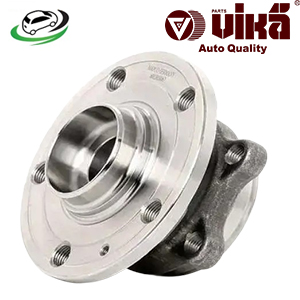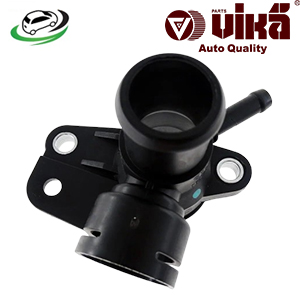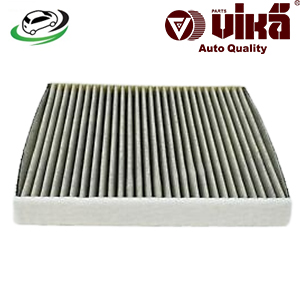-20%
Get Cabin Filter (Air-Con) AUDI A3 8V1/8VA/8VS / VW Golf VII/Passat 3G2/3G5 5Q0819644A
The cabin filter, also known as the interior air filter, is an essential component in a vehicle’s HVAC (Heating, Ventilation, and Air Conditioning) system. It plays a critical role in maintaining the air quality inside the vehicle’s cabin by filtering out contaminants and pollutants from the outside air before it enters the interior. Understanding the function, types, benefits, and maintenance of the cabin filter can help ensure a cleaner and more comfortable driving environment.
Function of the Cabin Filter
- Air Purification:
- Primary Role: The cabin filter purifies the air entering the vehicle’s cabin by trapping dust, pollen, and other airborne contaminants.
- Mechanism: It captures particulate matter from the outside air, preventing these contaminants from circulating inside the vehicle.
- Improved Air Quality:
- Primary Role: The filter improves the overall air quality within the cabin.
- Mechanism: By removing allergens and pollutants, it helps create a healthier and more comfortable environment for passengers.
- Protection of HVAC System:
- Primary Role: The cabin filter protects the HVAC system components from debris and dirt.
- Mechanism: It prevents contaminants from entering the system, which can help maintain the efficiency and longevity of the HVAC components.
- Reduction of Odors:
- Primary Role: The cabin filter can help reduce unpleasant odors inside the vehicle.
- Mechanism: Activated charcoal or other specialized materials in some filters can absorb and neutralize odors from outside sources, such as exhaust fumes or smoke.
- Prevention of Fogging:
- Primary Role: The filter can help prevent windshield fogging.
- Mechanism: By maintaining a clean airflow through the HVAC system, the filter helps manage the interior humidity levels, reducing the likelihood of foggy windows.
Types of Cabin Filters
- Particulate Cabin Filters:
- Description: These filters are designed to capture larger particles, such as dust, pollen, and debris.
- Material: Typically made from paper or synthetic fibers.
- Advantages: Effective at filtering out larger particles, cost-effective.
- Disadvantages: May not be as effective at filtering out smaller pollutants or odors.
- Activated Carbon Cabin Filters:
- Description: These filters feature activated carbon (or charcoal) to absorb odors and gases in addition to particulate matter.
- Material: Contains a layer of activated carbon within the filter media.
- Advantages: Provides enhanced filtration by reducing odors and absorbing harmful gases.
- Disadvantages: Can be more expensive than standard particulate filters.
- HEPA (High-Efficiency Particulate Air) Cabin Filters:
- Description: HEPA filters offer a high level of filtration by capturing very small particles, including fine dust and allergens.
- Material: Made from a dense mat of fibers that trap particles as air passes through.
- Advantages: Provides superior air quality by capturing microscopic particles, beneficial for allergy sufferers.
- Disadvantages: Generally more expensive and may have higher resistance to airflow, potentially affecting HVAC performance.
- Electrostatic Cabin Filters:
- Description: These filters use electrostatic charges to attract and capture particles from the air.
- Material: Made from materials that generate an electrostatic charge.
- Advantages: Can capture a wide range of particles, including those smaller than what standard filters catch.
- Disadvantages: May be more expensive and require proper maintenance to retain effectiveness.
- Hybrid Cabin Filters:
- Description: These filters combine multiple technologies, such as HEPA and activated carbon, to provide comprehensive filtration.
- Material: Combines elements of different filter types.
- Advantages: Offers the benefits of multiple filtration technologies in one filter.
- Disadvantages: Can be more costly and may have higher resistance to airflow.
Benefits of Properly Functioning Cabin Filters
- Enhanced Air Quality:
- Benefit: A properly functioning cabin filter ensures cleaner air inside the vehicle’s cabin.
- Explanation: By trapping contaminants and pollutants, the filter helps create a healthier environment for passengers.
- Reduced Allergens:
- Benefit: The filter helps reduce allergens such as pollen and dust.
- Explanation: Effective filtration can alleviate allergy symptoms and provide relief for passengers with respiratory conditions.
- Improved HVAC Efficiency:
- Benefit: A clean cabin filter helps maintain the efficiency of the HVAC system.
- Explanation: By preventing debris from entering the system, the filter ensures that the HVAC components operate effectively and efficiently.
- Extended Vehicle Lifespan:
- Benefit: Proper filtration helps protect the HVAC system and related components.
- Explanation: By reducing wear and tear on the system, a clean filter can contribute to the longevity of the vehicle’s HVAC components.
- Enhanced Comfort:
- Benefit: A well-maintained cabin filter contributes to a more comfortable driving experience.
- Explanation: Cleaner air and reduced odors improve the overall comfort of the vehicle’s interior.
Symptoms of a Faulty or Clogged Cabin Filter
- Reduced Airflow:
- Symptom: Noticeable decrease in airflow through the HVAC system.
- Cause: A clogged or dirty cabin filter can restrict airflow.
- Consequence: Reduced airflow can affect the efficiency of the HVAC system and make it harder to regulate temperature.
- Unpleasant Odors:
- Symptom: Foul or musty smells coming from the vents.
- Cause: A filter that is saturated with contaminants or odors.
- Consequence: Unpleasant odors can affect the comfort of the driving environment.
- Increased Dust or Debris in the Cabin:
- Symptom: Accumulation of dust or debris inside the vehicle.
- Cause: A faulty filter may not effectively capture contaminants.
- Consequence: Increased dust can affect the cleanliness and air quality inside the cabin.
- Foggy Windows:
- Symptom: Persistent fogging on the windshield or windows.
- Cause: Ineffective filtration of humidity and contaminants.
- Consequence: Foggy windows can impair visibility and safety.
- HVAC System Warning Lights:
- Symptom: Illumination of warning lights related to the HVAC system.
- Cause: Issues with the filter may trigger system alerts.
- Consequence: Warning lights indicate potential problems with the HVAC system that may require attention.
Maintenance and Replacement Tips
- Regular Inspections:
- Tip: Periodically check the condition of the cabin filter.
- Frequency: Inspections should be part of routine vehicle maintenance, typically every 12,000 to 15,000 miles or as recommended by the manufacturer.
- Timely Replacement:
- Tip: Replace the cabin filter as needed to ensure optimal performance.
- Indication: Replace the filter if you notice symptoms such as reduced airflow, unpleasant odors, or increased dust in the cabin.
- Use Quality Filters:
- Tip: Choose high-quality cabin filters that meet or exceed OEM specifications for your vehicle.
- Reason: Quality filters ensure effective air purification and compatibility with your vehicle’s HVAC system.
- Follow Manufacturer Recommendations:
- Tip: Adhere to the manufacturer’s recommended replacement intervals and specifications for the cabin filter.
- Reason: Following recommendations ensures proper maintenance and optimal performance.
- Professional Assistance:
- Tip: Have a professional mechanic inspect and replace the cabin filter if you are unsure about the process or if complications arise.
- Reason: Professional assistance ensures proper installation and function of the filter.
- Keep HVAC System Clean:
- Tip: Regularly clean and maintain the HVAC system to support the effectiveness of the cabin filter.
- Reason: A clean system helps the filter perform better and extends its lifespan.
- Monitor Air Quality:
- Tip: Pay attention to changes in air quality and comfort inside the vehicle.
- Reason: Monitoring helps identify potential issues early and ensures timely maintenance or replacement.
Follow us on Facebook for more parts.



